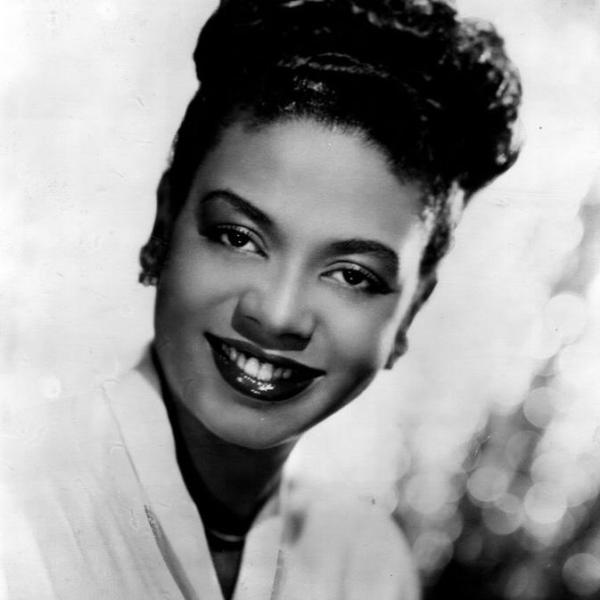Art Talk with Gabrielle Lamb

"There's no question of whether [a project is] going to work. It's not that I'm so confident from the beginning that I have a fail-safe idea. It's that you go through multiple failures every day on your way to finding something that does work." — Gabrielle Lamb
In the world of classical ballet where female dancers start their careers as one of 16 or 24 identical swans or sylphs, how does a woman step out of the corps de ballet and become a choreographer? And how does being a woman impact her ideas and the way she works? We explored these and other questions with choreographer Gabrielle Lamb. The NEA awarded a 2015 Art Works grant to Ballet Memphis to support the I Am project, a new work that explores themes of self-definition, equality, and human value that have roots in the Civil Rights Movement and are still relevant today. Of the four sections, “I Am a Man,” “I Am a Woman,” I Am a Child,” and “I Am,” Lamb contributed the “I Am a Woman” segment. Ballet Memphis Founder and Artistic Director Dorothy Gunther Pugh selected Lamb for the job saying that Lamb definitely “has her own voice, not imitative, that comes from a communal place that we are in desperate need of.” Pugh adds, “I am used to making my way as a female artistic director of a ballet company and the different ways it takes for me to be seen and heard. There is a particular female approach and point of view. The best way to describe it is a lateral, side-to-side vision, of knowing how to build a nest, to nurture a flock, and help people thrive.” It’s about creating an alternative to “that sense of the male gaze and that we have lost something that is incredibly necessary” with that gaze. Gabrielle Lamb grew up in Savannah, Georgia and received her professional training at the Boston Ballet School. She performed with the Cleveland Ballet, with companies in Europe, and then with Les Grande Ballet Canadiens in Montreal from 2000 to 2009. Her first piece to be set on a company was in 2010 when her NeverDidRunSmooth won the National Choreographic Competition and was performed by Hubbard Street 2 based in Chicago. NEA: How did you get started as a choreographer? GABRIELLE LAMB: I started to choreograph when I was 13 but without any sense that this is what someone might do professionally. I was just putting on a show. But as I got older, I was too scared to do it. I think the rigorous ballet training drummed it out of me. It took me a good long while before I could work up the courage to do it as an adult. NEA: How did you overcome that fear? LAMB: I felt that sooner or later I would have to do it. I started filming my own improvisations and the movements looked so different from how they felt, it gave me courage that I might be able to make up something more interesting than what I could dance myself. But more than anything else, the idea of not choreographing became scarier than the risk involved in doing it. NEA: Jennifer Homans, director of the Center for Ballet and the Arts, was quoted recently in the New York Times saying that the culture of the ballet world discourages women from considering choreography and “to explore that aspect of their creativity.” In an article in the December 2011 issue of Pointe Magazine, writer Margaret Fuller said, “Company life—particularly in the corps de ballet, where women are expected to fit the same swan mold—doesn’t encourage creative effort.” How did your ballet training impact your development as a choreographer? LAMB: It was hard for me to be in the corps de ballet. I had senior dancers take me aside and say, “You really need to concentrate more on staying in line and less on your own dancing.” It is a rude awakening when joining a company. I did it, of course, but it did not come automatically for me. In my choreography, I have very little unison probably because of my experiences as a corps de ballet dancer. NEA: When you think of yourself as a choreographer, is it as a female choreographer or as a choreographer who is female? LAMB: Most of the time, I'm just doing my work knowing that there are a lot of other choreographers around doing their work. Occasionally I'll find myself thinking "Oh, I don't belong to this club. I don't belong to that club.” But ultimately, that line of thought is unproductive. Much better to seek out the people who connect to your work and make the most of those connections. There are directors who will understand and appreciate my work and others who won't. Dorothy [Gunther Pugh of Ballet Memphis] connected to my work in a certain way that may have had something to do with the fact that we are both women. Sometimes I wonder whether being female makes me more oriented toward small details on stage as opposed to big patterns that would read well in a huge theater. I think men are more interested in abstraction and patterns, generally speaking. I tend to see dancers as people and to concentrate on the interactions between them. Also, I am very sensitive to the energy in a rehearsal—how the dancers are feeling. Do they feel appreciated, do they feel bored? I think it's good that I have that in mind and that I'm constantly trying to read them as people and not just as bodies. However, if I'm not careful, I could get distracted by that to the point that it inhibits my progress on the work. But so far it's come out more on the plus side. NEA: Focusing now on Ballet Memphis and “I Am a Woman,” you chose to explore that theme through the relationship of women and clothing. How did you come up with that idea? LAMB: It started with Dorothy. She'd heard a story on the radio about a new book, called Women in Clothes and she suggested it to me. I expected the book would be about fashion and the outward appearance of clothing; but in fact it focused more on the experience of the wearer than on that of the viewer. I'd never thought much about how clothes feel, and that emphasis became important to the development of the piece. And knowing that I had a really good costume designer in Christine Darch also made clothing seem like a good direction to take. NEA: I’d like to quote you from a video created about the I Am project because I think you describe your ideas so well."I’m exploring what clothing means to women, the idea of covering the body or exposing the body, body image, body contours, and what that has to do with female self-image.
I do have men in my piece. I thought about not using men but in the end I decided it would be more interesting because of course the male gaze is part of what women dress for although women do dress for other women as well."
With these ideas having inspired the piece, what did you want people to take away after seeing it? LAMB: I think a sense of ambiguity is important. I like the idea that no piece of clothing is right or wrong in itself and that the experience of the wearer is what matters. Also, insect imagery was important to me, and just as an insect molts multiple times in its lifecycle, a woman may keep changing her relationship to her appearance and clothing throughout her lifetime. Several times after performances in Memphis, audience members came up and told me that the piece had made them think about how they'd like to talk to a young daughter/granddaughter about appearance and clothing—that, to me, was the most gratifying success I could have hoped for. NEA: How does failure inform your work? LAMB: When I was working on “I Am a Woman,” a group of donors came in to watch part of a rehearsal. It was in the beginning stages of the process and one of the men asked me afterwards, "At what point do you know whether it's going to work or not?" And I said, well, it has to work. There's no question of whether it's going to work. It's not that I'm so confident from the beginning that I have a fail-safe idea. It's that you go through multiple failures every day on your way to finding something that does work. A lot of my ideas fail but they give me clues to what direction might succeed. I have to be fairly confident about my ability to think on my feet and turn the failures into something interesting. NEA: Please complete the sentence, “Art matters because . . . “ LAMB: Art matters because it lets us see the world through someone else's eyes. That's one of the definitions of empathy. Art is one of the most inspiring ways to experience empathy and it opens you to experiencing empathy for the rest of your life. If you liked this story, then check out this trailer featuring insight from all of the choreographers for the I Am project.



